If you've ever wondered how to transform a humble bowl of split pea soup into something truly magical, the answer lies in the spices. While the base is hearty and earthy, it's the seasoning that brings out its soulful flavor and turns an everyday dish into a culinary gem.
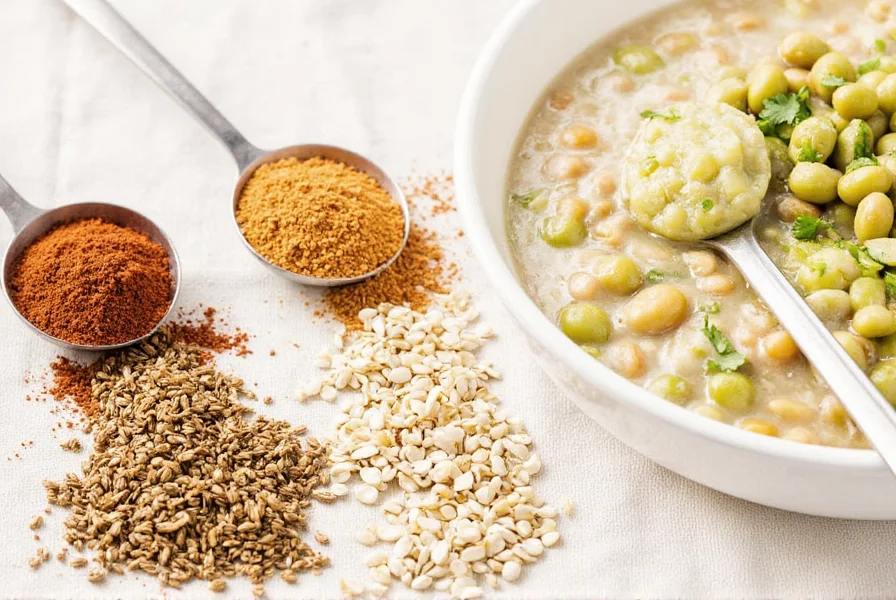
Why Seasoning Matters in Split Pea Soup
Split pea soup might seem like a simple dish made from dried peas and broth, but without proper seasoning, it can taste flat and uninspiring. This thick, creamy soup benefits greatly from a thoughtful blend of herbs and spices that highlight its natural sweetness and nuttiness.
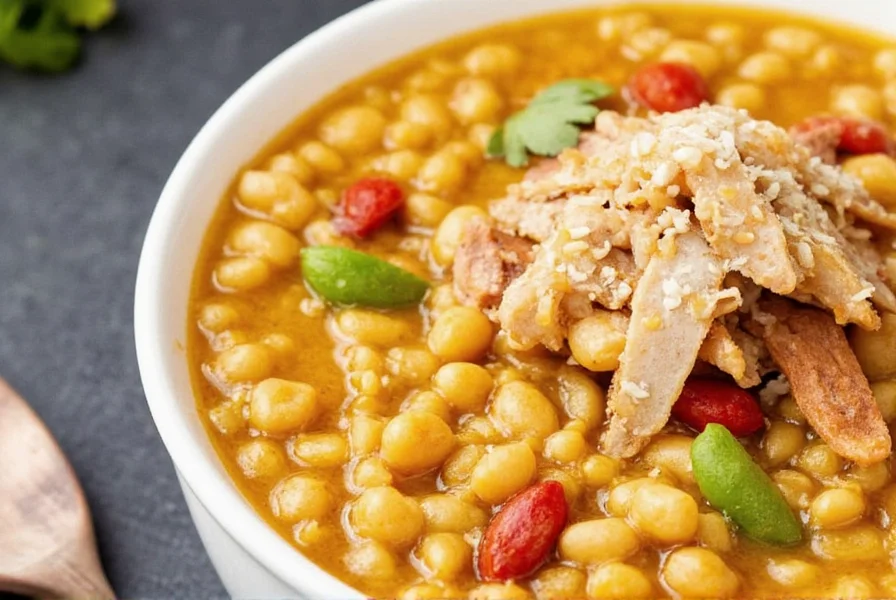
The right seasonings do more than just add flavor — they create balance, depth, and warmth. Whether you're going for classic comfort or something bolder, seasoning gives your soup a signature touch that will keep people coming back for more.
Top 5 Spices That Elevate Your Soup Game
Here are the five powerhouse spices that every split pea soup lover should know:
- Bay Leaf – A must-have for any simmered legume soup.
- Thyme – Adds earthy brightness and herbal depth.
- Cumin – Brings smoky warmth and Middle Eastern flair.
- Paprika – Sweet or smoked, it enhances richness.
- Black Pepper – For that essential kick and heat.
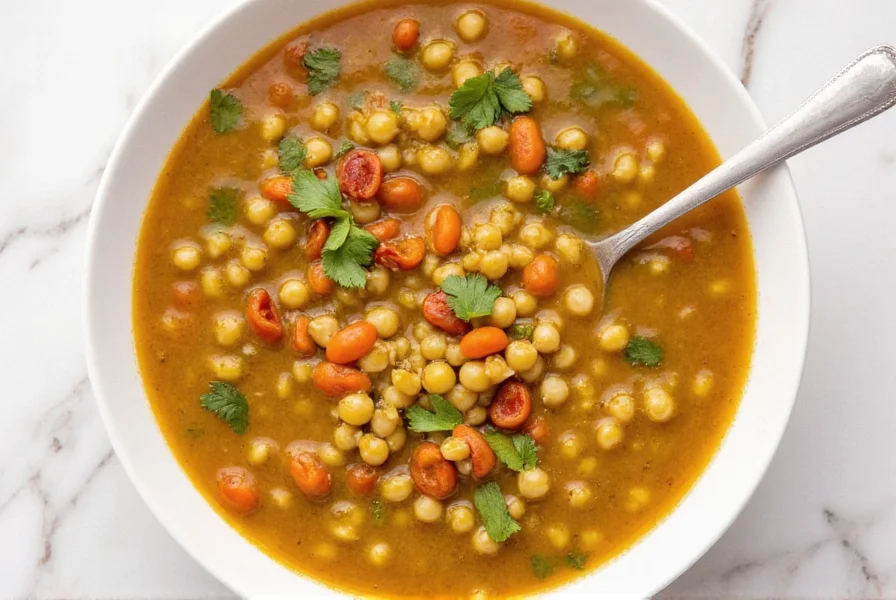
| Spice | Flavor Profile | Use Case |
|---|---|---|
| Bay Leaf | Elegant, herbal, slightly floral | Infuse while cooking, remove before serving |
| Thyme | Earthy, aromatic, woodsy | Great fresh or dried, pairs well with carrots and celery |
| Cumin | Smoky, nutty, bold | Ideal for spicing up lentil or split pea soups with Mediterranean influence |
| Paprika | Sweet, smoky, vibrant | Adds color and warmth; great with ham or bacon additions |
| Black Pepper | Peppery, sharp, spicy | Enhances all other flavors; best freshly ground |
How to Use Each Spice Like a Pro
Knowing what spices to use is only half the battle — knowing how and when to use them makes all the difference.
Bay Leaf: The Simmering Secret
Bay leaf is best added early in the cooking process so its subtle flavor has time to infuse into the broth. Always remember to remove it before serving — it's not meant to be eaten!
Thyme: Fresh vs. Dried
Fresh thyme offers a bright note, while dried thyme works well when you want a deeper, more concentrated flavor. Add either during the last 30 minutes of cooking to preserve its aroma.
Cumin: Toast It First
To really bring out the smoky richness of cumin, lightly toast the seeds in a dry pan before grinding and adding them to your soup. Or use pre-ground cumin sparingly — a little goes a long way.
Paprika: Choose Your Style
Sweet paprika adds mild sweetness and color, while smoked paprika (like Spanish pimentón) gives a deep, grilled flavor. Use it as a finishing touch or stirred in during the final stages.
Black Pepper: Grind Fresh
Freshly cracked black pepper brings out the hidden complexities in other ingredients. Don't skimp on quality here — invest in whole peppercorns and grind them yourself for maximum impact.
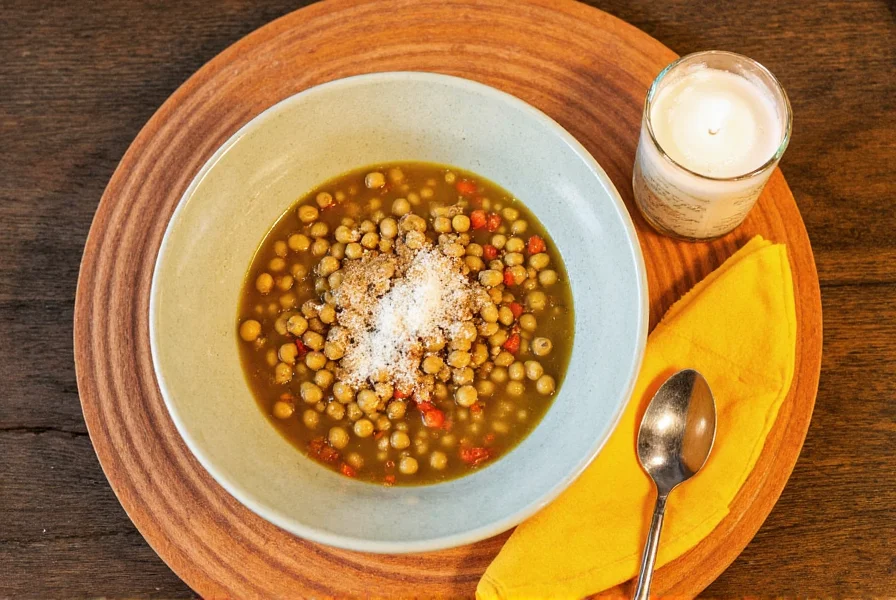
Best Flavor Combinations to Try
Mixing and matching spices opens up a world of flavor possibilities. Here are some tried-and-true combos that work beautifully in split pea soup:
Classic Comfort Blend
- Bay Leaf
- Thyme
- Black Pepper
- Dried Onion Flakes
This combination leans into traditional European flavors, perfect for cold nights and cozy kitchens.
Middle Eastern Twist
- Cumin
- Coriander
- Garlic Powder
- Turmeric
- Lemon Juice
This blend brings warmth and brightness, ideal if you're craving something exotic yet familiar.
Smoky Southern Version
- Smoked Paprika
- Chipotle Powder
- Bay Leaf
- Garlic
Kick things up a notch with this bold, rich profile — perfect for those who enjoy a bit of heat and depth.
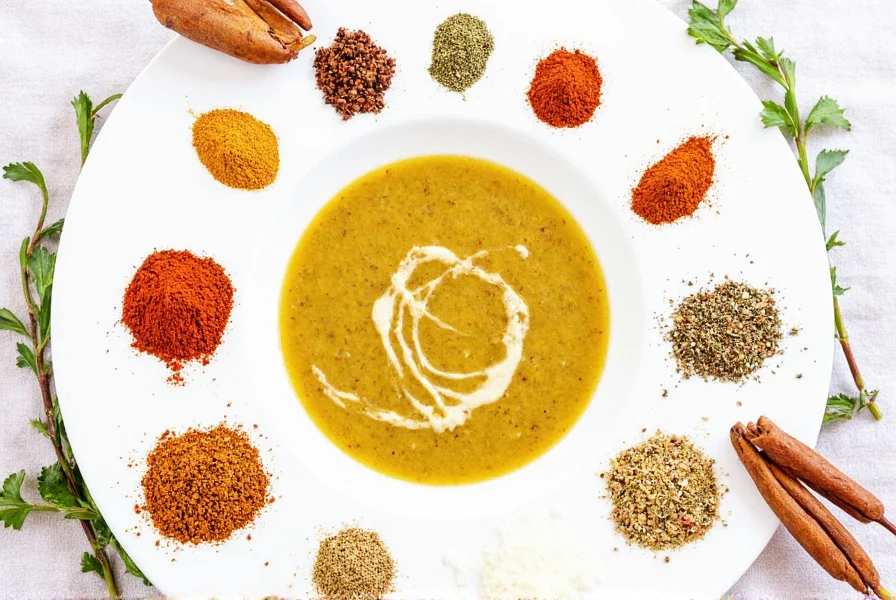
Buying Guide: Choosing Quality Spices for Split Pea Soup
Not all spices are created equal. To get the most out of your split pea soup, invest in high-quality ingredients. Here's what to look for when shopping for key spices:
1. Bay Leaves
- Feature: Dried, fragrant leaves used for infusion
- Best Brands: Simply Organic, Frontier Co-op
- Advantage: Enhances depth without overpowering other flavors
- Use Cases: Best in slow-cooked dishes like soups and stews
- Target Audience: Home cooks and professional chefs alike
- Occasion: Everyday cooking, meal prep, and winter warmers
2. Thyme
- Feature: Earthy herb with woody stems
- Best Brands: McCormick, Badia, Penzeys
- Advantage: Adds herbal brightness and complements vegetables
- Use Cases: Soups, roasted veggies, marinades
- Target Audience: Casual cooks and herb lovers
- Occasion: Weeknight dinners, holiday meals
3. Cumin
- Feature: Bold, smoky, and aromatic
- Best Brands: Everest, Spicely Organics, Simply Organic
- Advantage: Deepens flavor and boosts umami notes
- Use Cases: Curries, lentils, bean dishes
- Target Audience: Spicy food enthusiasts and global cuisine fans
- Occasion: Family dinners, potlucks, cultural celebrations
4. Paprika
- Feature: Sweet, smoky, or spicy depending on type
- Best Brands: Szeged, Hungarian Gold, Schneiders
- Advantage: Adds color and complexity quickly
- Use Cases: Garnishing, soups, stews, grilled meats
- Target Audience: Gourmands and adventurous eaters
- Occasion: Entertaining, gourmet cooking, festive meals
5. Black Pepper
- Feature: Sharp, spicy, and warming
- Best Brands: Tellicherry, Anthony's, King Arthur
- Advantage: Enhances absorption of other nutrients and flavors
- Use Cases: Every dish imaginable
- Target Audience: Everyone who eats food
- Occasion: Anytime, anywhere
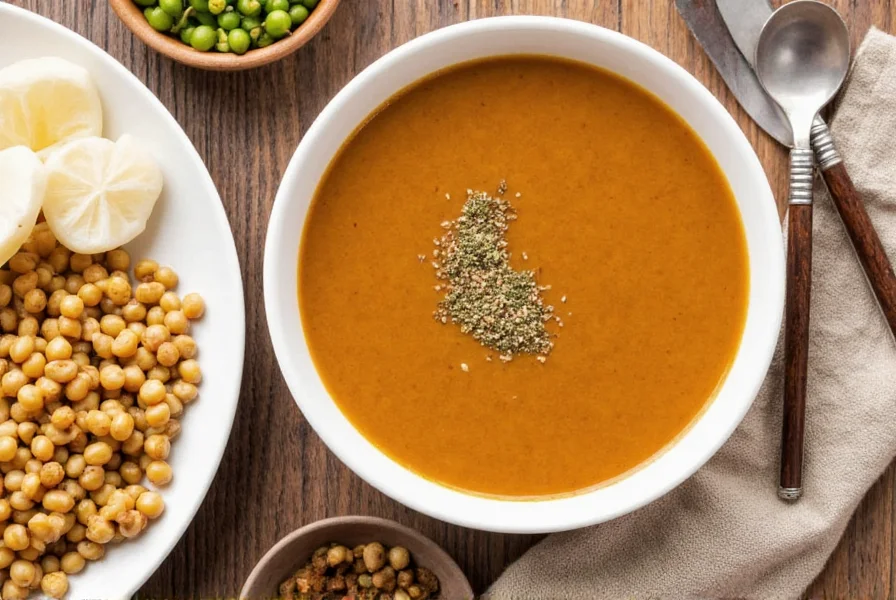
Final Tips & Serving Suggestions
Once you've seasoned your soup to perfection, here are some pro tips to elevate your dining experience:
- Adjust As You Go: Taste before serving and adjust salt and spices as needed.
- Resting Time: Letting the soup sit for 10–15 minutes after cooking allows the flavors to meld together beautifully.
- Garnish Smartly: Swirl in a bit of sour cream or Greek yogurt and sprinkle with chopped parsley or chives.
- Pair with Bread: Serve with crusty bread or cornbread for a satisfying texture contrast.
- Reheat with Care: When reheating, add a splash of broth or water to restore the perfect consistency.
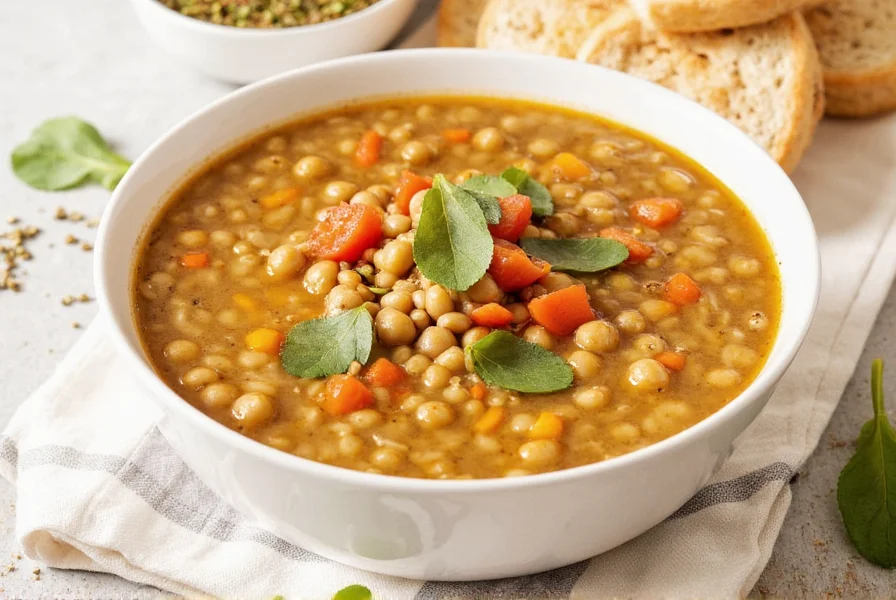
Frequently Asked Questions About Seasoning Split Pea Soup
What are the essential spices for traditional split pea soup?
The essential spices for traditional split pea soup include bay leaf, thyme, black pepper, and sometimes a pinch of dried marjoram. These create the classic flavor profile that complements the natural sweetness of the peas without overpowering them.
Can I use fresh herbs instead of dried in split pea soup?
Yes, you can use fresh herbs! Fresh thyme works particularly well - you'll need about three times the amount of fresh herbs compared to dried. For example, if a recipe calls for 1 teaspoon of dried thyme, use 1 tablespoon of fresh thyme. Add fresh herbs during the last 15-20 minutes of cooking to preserve their delicate flavor.
How do I fix bland split pea soup?
If your split pea soup tastes bland, try these fixes: 1) Add acidity with a splash of lemon juice or vinegar, 2) Increase salt gradually while tasting, 3) Add freshly cracked black pepper, 4) Stir in a pinch of cumin or smoked paprika for depth, 5) Finish with fresh herbs. Remember to adjust one element at a time and taste as you go.
When is the best time to add spices to split pea soup?
The timing depends on the spice: hardy herbs and spices like bay leaves should be added at the beginning to infuse flavor throughout cooking. Medium-strength spices like thyme and cumin work best added midway through cooking. Delicate spices and fresh herbs should be added during the last 15-30 minutes. Finishing spices like freshly cracked pepper should be added right before serving.
Can I make flavorful split pea soup without meat?
Absolutely! For a rich vegetarian version, use vegetable broth instead of meat-based broths. Boost umami with mushrooms or tomato paste, and add depth with smoked paprika (which gives a meaty smokiness without actual meat). Don't skip the bay leaf and thyme, which provide classic flavor notes, and finish with a splash of lemon juice to brighten the flavors.
Conclusion
Seasoning for split pea soup isn't just about throwing in whatever spices you have on hand — it's an art form. From choosing the right bay leaf to mastering the perfect cumin kick, each decision impacts the overall flavor and enjoyment of your dish.
Whether you stick to the classics or go off-road with bold international twists, the key is to season thoughtfully and taste frequently. With the knowledge you've gained today, you're ready to whip up a bowl of soup that's nothing short of spectacular.
So next time you're making split pea soup, don't hold back — let your spices shine!
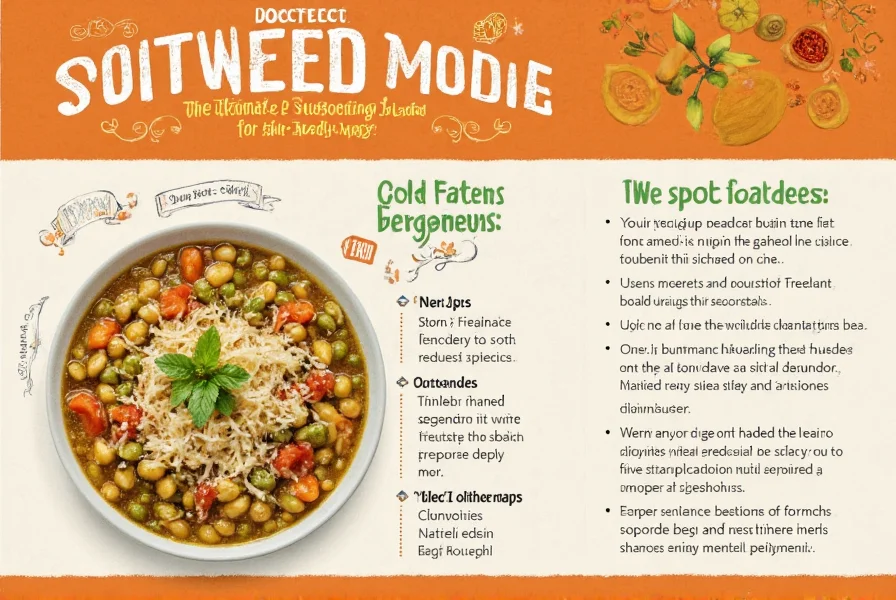

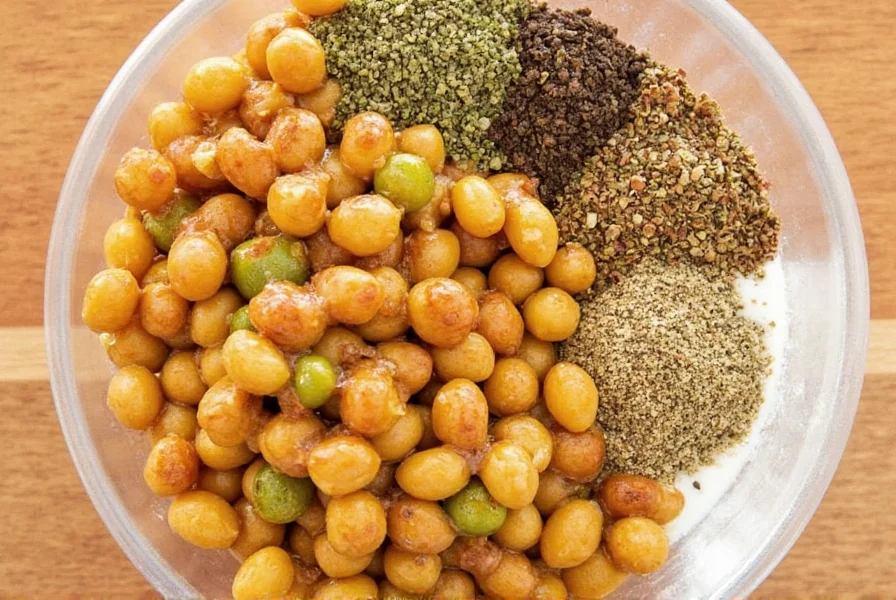









 浙公网安备
33010002000092号
浙公网安备
33010002000092号 浙B2-20120091-4
浙B2-20120091-4